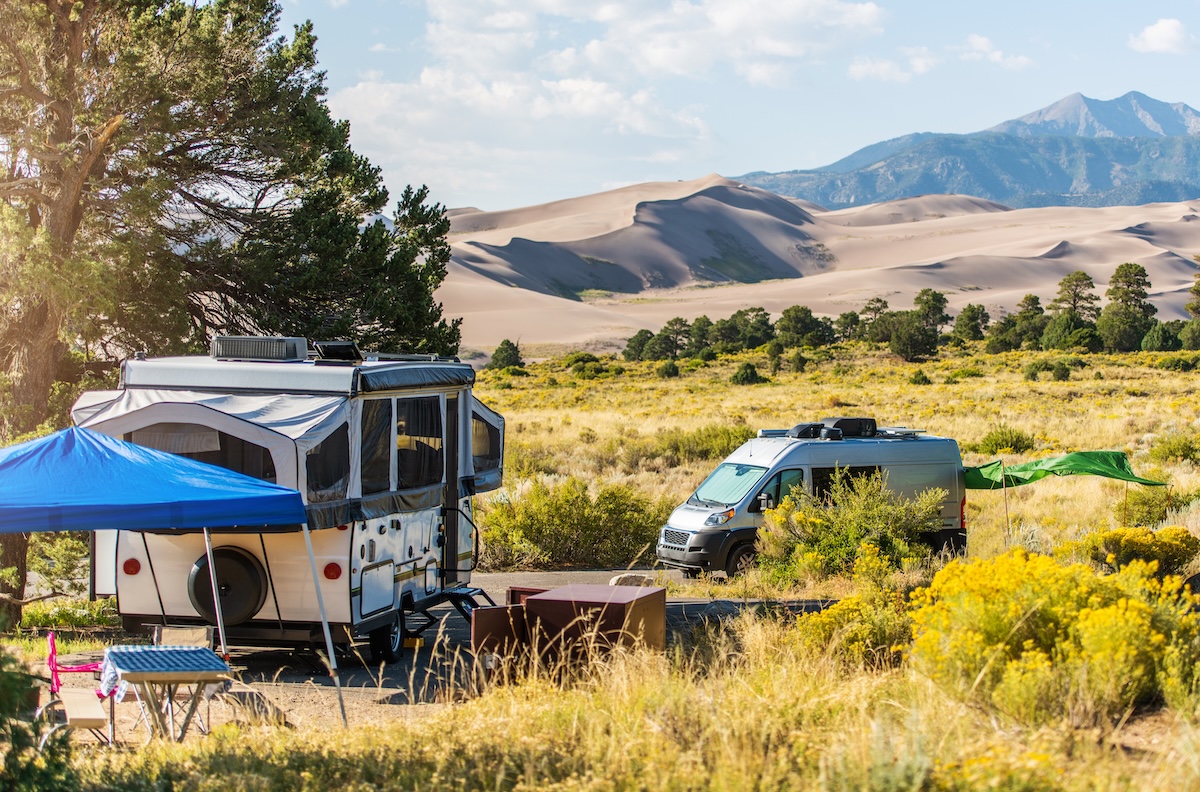Are you planning your first RV adventure? Choosing the right RV size is one of the most important decisions you’ll make. The size of your RV can impact everything from your driving experience to how much you enjoy your time on the road. This RV buying guide is designed to help first-time buyers navigate the process of selecting the perfect RV to suit their vehicle and lifestyle.
Whether you’re considering a compact camper for weekend getaways or a spacious motorhome for full-time living, this guide will provide clear steps to help you make an informed decision.
Why RV Size Matters
Choosing the correct RV size ensures a safe, comfortable, and enjoyable travel experience. Here are some key reasons RV size matters:
- Driving and Parking: Larger RVs can be more challenging to maneuver and park, especially for beginners.
- Fuel Efficiency: Smaller RVs are generally more fuel-efficient than larger ones.
- Camping Options: Some campgrounds have size restrictions, so a smaller RV might give you access to more locations.
- Living Space: While larger RVs offer more room, they also require more maintenance and can feel overwhelming, if you don’t need the extra space.
Step 1: Assess Your Vehicle’s Towing Capacity
If you’re purchasing a towable RV like a travel trailer or fifth wheel, start by checking your vehicle’s towing capacity. Exceeding your vehicle’s limit can lead to unsafe conditions and potential damage to your car.
- Locate the Towing Capacity: Check your owner’s manual or the manufacturer’s website for your vehicle’s towing capacity.
- Understand Weight Terms: Pay attention to terms like Gross Vehicle Weight Rating (GVWR) and Tongue Weight. These help determine the RV’s total weight and how it’s distributed.
- Account for Gear: Remember to factor in the weight of your gear, water, and supplies.
If your vehicle’s towing capacity is limited, you may want to consider lightweight RV options like pop-up campers or teardrop trailers.
Step 2: Identify Your Lifestyle Needs
Your lifestyle and travel plans play a significant role in determining the ideal RV size. Here are some questions to guide you:
How Many People Will Be Traveling?
- Solo Travelers or Couples: A compact RV like a Class B motorhome or small travel trailer may be sufficient.
- Families: Consider a larger RV with separate sleeping areas, such as a bunkhouse travel trailer.
- Groups: A Class A motorhome or fifth wheel with multiple slide-outs provides ample space for groups.
What’s Your Travel Style?
- Weekend Warriors: If you’re taking short trips, a smaller RV with basic amenities may be all you need.
- Full-Time Travelers: Those living on the road full-time should opt for a larger RV with ample storage, full kitchen facilities, and a comfortable living area.
- Adventure Seekers: If you’ll be camping off-grid or in remote locations, look for a smaller RV with off-road capabilities.
How Much Space Do You Need?
Think about the amenities you’ll need:
- Sleeping arrangements: Beds, bunks, or convertible spaces?
- Kitchen: Basic kitchenette or full-sized appliances?
- Bathroom: Shower and toilet, or are campground facilities sufficient?
- Storage: Will you need space for bikes, kayaks, or other gear?
Step 3: Consider Your Budget
RVs come in a wide price range, and size plays a major role in the cost. Here are some financial factors to consider:
- Initial Purchase Cost: Larger RVs and motorhomes tend to be more expensive.
- Fuel Costs: Bigger RVs require more fuel, which can add up on long trips.
- Maintenance and Repairs: A larger RV may come with higher upkeep costs.
- Campground Fees: Some campgrounds charge more for larger RVs.
Step 4: Understand the Different RV Categories
RVs come in a variety of sizes and styles. Here’s a breakdown of common options:
Class A Motorhomes
- Size: 26 to 45 feet
- Best For: Families or full-time travelers who want a home on wheels
- Pros: Spacious interiors, luxury features, and abundant storage
- Cons: Expensive, challenging to drive and park
Class B Motorhomes (Camper Vans)
- Size: 16 to 22 feet
- Best For: Solo travelers or couples seeking a compact, easy-to-drive option
- Pros: Fuel-efficient, easy to maneuver, great for urban areas
- Cons: Limited space and storage
Class C Motorhomes
- Size: 20 to 33 feet
- Best For: Families or groups who want a balance of space and drivability
- Pros: Affordable, versatile, and easier to drive than Class A
- Cons: Smaller living area compared to Class A
Travel Trailers
- Size: 10 to 40 feet
- Best For: All types of travelers, depending on size and features
- Pros: Wide variety of sizes, can be detached from the tow vehicle
- Cons: Requires a tow vehicle and can be challenging to back up
Fifth Wheels
- Size: 22 to 40 feet
- Best For: Families or full-timers who want luxury and space
- Pros: Spacious, stable towing, and often have slide-outs for extra room
- Cons: Requires a heavy-duty truck with a fifth-wheel hitch
Pop-Up Campers
- Size: 8 to 16 feet (collapsed)
- Best For: Budget-conscious travelers or those with limited towing capacity
- Pros: Lightweight, affordable, and easy to store
- Cons: Limited amenities and less insulation
Teardrop Trailers
- Size: 4 to 6 feet wide
- Best For: Solo travelers or couples on short trips
- Pros: Compact, lightweight, and easy to tow
- Cons: Minimal living space
Step 5: Visit RV Dealerships or RV Shows
Seeing RVs in person can give you a better idea of their size and features. Take the time to:
- Tour Different Models: Walk through RVs to see how they feel inside.
- Test the Layout: Sit on the furniture, lie on the beds, and imagine your daily routine.
- Ask Questions: Get advice from dealers or RV experts.
Attending an RV show is an excellent way to explore a wide variety of options in one place.
Step 6: Think About Storage and Parking
Before purchasing an RV, consider where you’ll store it when it’s not in use. Here are some tips:
- At Home: Ensure you have enough driveway or garage space.
- RV Storage Facilities: Research nearby options and factor in storage fees.
- HOA Rules: Check if your neighborhood has restrictions on RV parking.
Key Takeaways
- Know Your Vehicle: Always check your vehicle’s towing capacity before choosing an RV.
- Prioritize Your Needs: Focus on the size and features that fit your travel style.
- Set a Budget: Account for purchase price, maintenance, and other costs.
- Do Your Research: Explore different RV types and visit dealerships or shows to compare options.
Choosing the right RV size is a balance between practicality and comfort. With the tips in this RV buying guide, you’ll be well on your way to finding the perfect home on wheels for your adventures. Happy travels!


